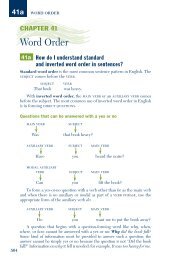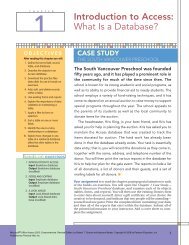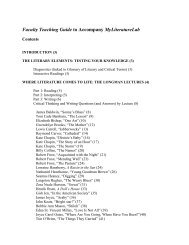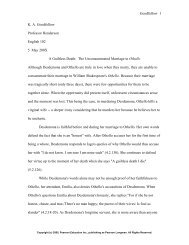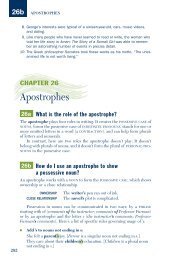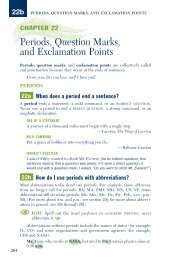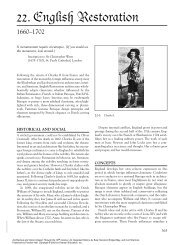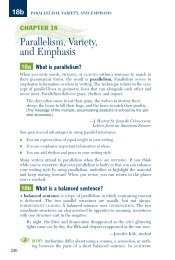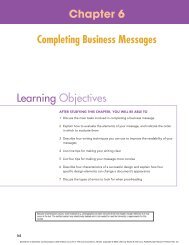JavaScript/JScript: Control Structures I - Pearson Learning Solutions
JavaScript/JScript: Control Structures I - Pearson Learning Solutions
JavaScript/JScript: Control Structures I - Pearson Learning Solutions
Create successful ePaper yourself
Turn your PDF publications into a flip-book with our unique Google optimized e-Paper software.
2008934301<br />
Chapter 14 <strong>JavaScript</strong>/<strong>JScript</strong>: <strong>Control</strong> <strong>Structures</strong> I 421<br />
Fig. 14.9 Class-average program with sentinel-controlled repetition (part 3 of 3).<br />
In this example, we see that control structures may be stacked on top of one another<br />
(in sequence) just as a child stacks building blocks. The while structure (lines 28 through<br />
41) is immediately followed by an if/else structure (lines 44 through 52) in sequence.<br />
Much of the code in this program is identical to the code in Fig. 14.7, so we concentrate in<br />
this example on the new features and issues.<br />
Line 18 initializes gradeCounter to 0, because no grades have been entered yet.<br />
Remember that this program uses sentinel-controlled repetition. To keep an accurate record<br />
of the number of grades entered, variable gradeCounter is incremented only when a<br />
valid grade value is entered.<br />
Notice the difference in program logic for sentinel-controlled repetition compared with<br />
the counter-controlled repetition in Fig. 14.7. In counter-controlled repetition, we read a<br />
value from the user during each iteration of the while structure’s body for the specified<br />
number of iterations. In sentinel-controlled repetition, we read one value (lines 22 and 23)<br />
and convert it to an integer (line 26) before the program reaches the while structure. This<br />
value is used to determine whether the program’s flow of control should enter the body of<br />
the while structure. If the while structure condition is false (the user typed the sentinel<br />
as the first grade), the body of the while structure does not execute (no grades were<br />
entered). If, on the other hand, the condition is true, the body begins execution and the<br />
value entered by the user is processed (added to the total at line 30). After the value is<br />
processed, gradeCounter is incremented by 1 (line 33), the next grade is input from<br />
the user (lines 36 and 37) and the grade is converted to an integer (line 40), before the end<br />
of the while structure’s body. As the closing right brace (}) of the body is reached, at line<br />
41, execution continues with the next test of the while structure condition (line 28) using<br />
the new value just entered by the user to determine whether the while structure’s body<br />
should execute again. Notice that the next value is always input from the user immediately<br />
before the while structure condition is evaluated. This order allows us to determine<br />
whether the value just entered by the user is the sentinel value before that value is processed<br />
e-Business and e-Commerce: How to Program, by Harvey M. Deitel, Paul J. Deitel, and Tem R. Nieto. Published by Prentice Hall.<br />
Copyright © 2001 by <strong>Pearson</strong> Education, Inc.




